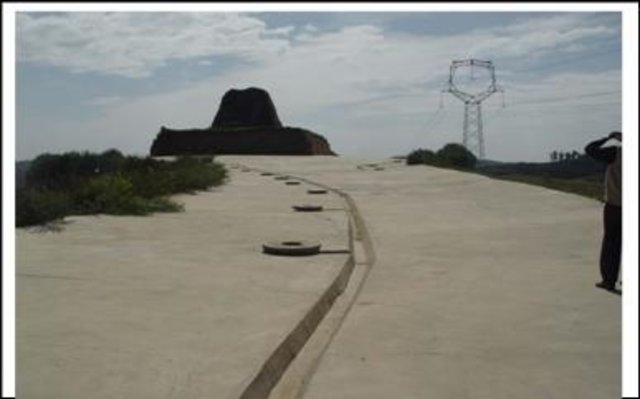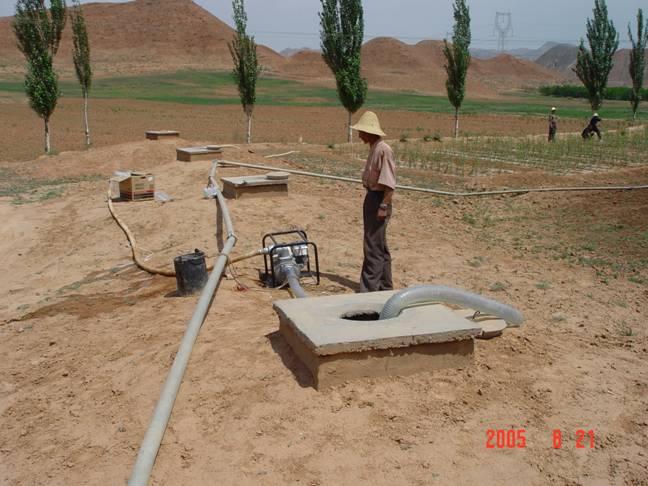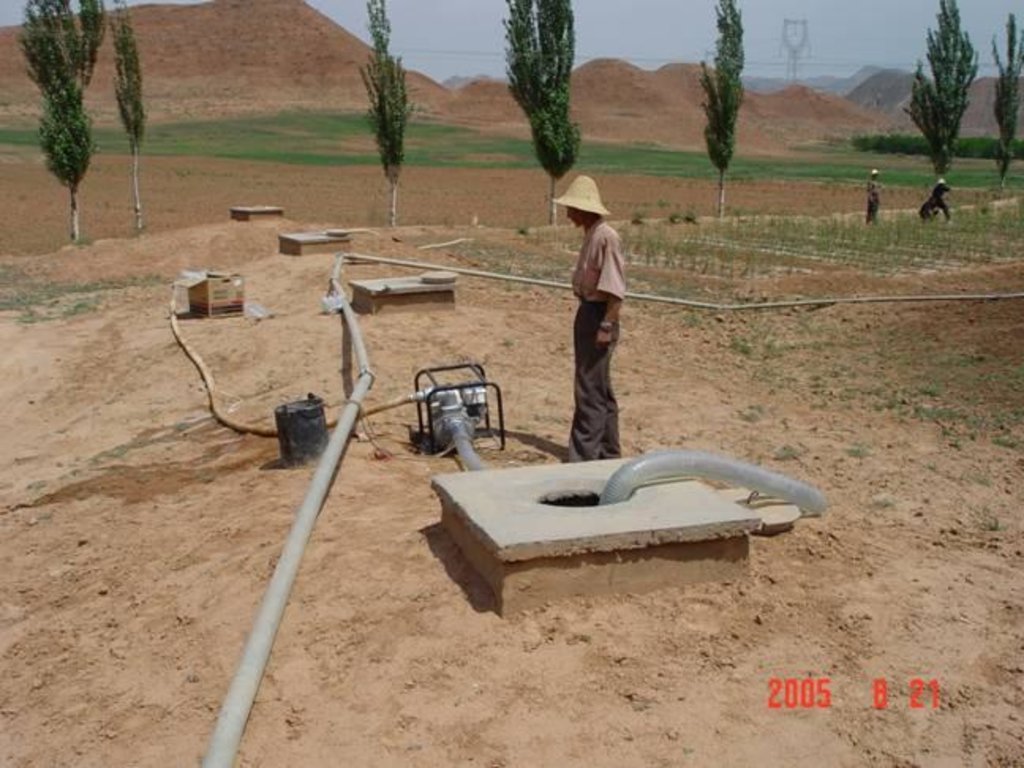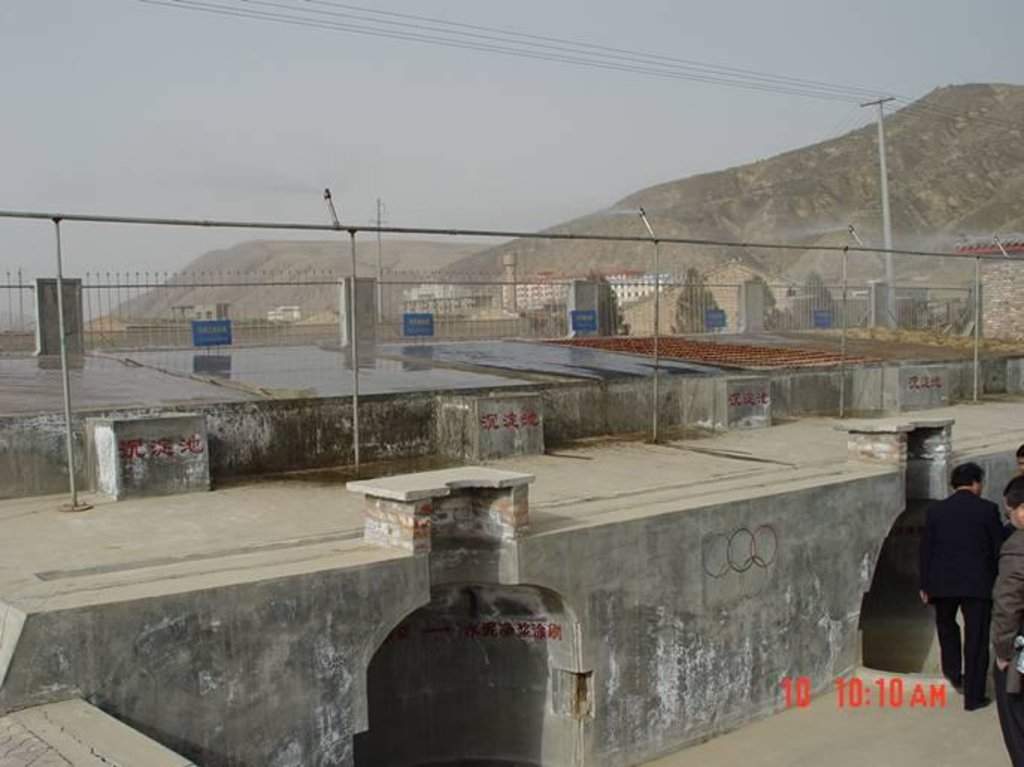Rainwater Cellars introduced through government support [Хятад]
- Шинийг нээх:
- Шинэчлэх:
- Эмхэтгэгч: Anna Schuler
- Хянан тохиолдуулагч: –
- Хянагч: Laura Ebneter
approaches_2432 - Хятад
Бүлгүүдийг үзэх
Бүгдийг дэлгэх Бүгдийг хаах1. Ерөнхий мэдээлэл
1.2 Арга барилыг баримтжуулах болон үнэлгээ хийхэд оролцсон хүн эсвэл байгууллагын холбоо барих хаяг
ГТМ мэргэжилтэн:
Wang Yaolin
GEF/OP12 Project Implementation Office of Gansu (Gamsu Sand Control Research Institute)
Chen Zhengbin, Forestry Bureau of Anding District, Dingxi City, Gansu Province
Хятад
Арга барилыг баримтжуулах/үнэлэх ажилд дэмжлэг үзүүлсэн байгууллага(ууд)-ын нэр (шаардлагатай бол)
CDE Centre for Development and Environment (CDE Centre for Development and Environment) - ШвейцарАрга барилыг баримтжуулах/үнэлэх ажилд дэмжлэг үзүүлсэн байгууллага(ууд)-ын нэр (шаардлагатай бол)
GEF/OP12 Gansu Project (GEF/OP12 Gansu Project) - Хятад1.3 WOCAT-аар баримтжуулсан өгөгдлийг ашиглахтай холбоотой нөхцөл
Эмхэтгэгч болон гол мэдээлэгч хүн(хүмүүс) WOCAT аргачлалаар баримтжуулсан мэдээллийг ашиглахтай холбоотой нөхцлийг хүлээн зөвшөөрсөн:
Тийм
1.4 ГТМ-ийн технологийн асуулгын(д) суурь мэдээлэл(д)

Rainwater Cellars [Хятад]
The use of courtyard, roof, road surface, slope, etc. as catchments to collect rainwater for underground water storage for future supply of cropland irrigation as well as drinking water for humans and livestock.
- Эмхэтгэгч: Anna Schuler
2. ГТМ Арга барилын тодорхойлолт
2.1 Арга барилын товч тодорхойлолт
Government takes the lead and propelled by project, the rainwater collection for irrigation technology scales up by demonstration.
2.2 Арга барилын дэлгэрэнгүй тодорхойлолт
Арга барилын дэлгэрэнгүй тодорхойлолт:
Dingxi County of Gansu Province is short of water resource. There is an old saying it's hard to exchange a cup of water for a cup of oil in Anding of Dingxi. During drought years, drinking water became a crisis and people had to walk dozens of miles to get water. With no self-relief capacity the local people live a hard life. To resolve water shortage, the most realistic method is to tap into the potential of local precipitation. Under the support of the Gansu provincial government, researches on rainwater collection were conducted during the period from 1988 to 1992 and water cellar technology was proven technically and economically feasible with its functions in preventing erosion, developing arid cropland and ecosystem recovery.
In 1994, the government disseminated water cellar technology in the northwestern part of the county covering 14 townships and 4376 households. After completion, the drinking water supply problem was mitigated for 22,000 people and 8700 animals. In 1995, a severe drought hit Gansu and the provincial government immediately initiated “1-2-1 Rainwater Collection Project, under which the government supplied cement and the local people provided sand/stone and labor to build water cellars. According to this project each household should build one water catchment with an area of100m2 made by concrete cement and two water cellars and one backyard cashcrop forest. By the end of 2000, a total of 57800 households were involved in the project to provide drinking water to 60,900 people and 333,900 heads of livestock. In addition, dryland farming has seen great development. Since 1996, water cellar technology has been diversified and evolved. The water collection fields have extended from roof and courtyard to road surface, ditch, hillside, land brink, etc and the application has been widened to scale livestock farming, spot watering and conservation irrigation of farmland based on the achievement of the 1-2-1 rainwater collection project. Moreover, water cellar technology has been gradually combined with greenhouse production, tourism agriculture, etc to form a development model integrating rainwater conservation irrigation, dryland farming and improved livelihood standards.
2.3 Арга барилын зурагууд
2.5 Арга барил нэвтрүүлсэн улс орон / бүс нутаг / байршил
Улс:
Хятад
Улс/аймаг/сум:
Gansu
Байршлын дэлгэрэнгүй тодорхойлолт:
Anding
2.8 Арга барилын үндсэн зорилго, зорилтууд
Aims are to: establish a extension mechanism that promotes sustainable development and involves farmers participation; improve the farmers' knowledge about rainwater utilization; strengthen farmer participation and their confidence in overcoming difficulties; solve drinking water problem; eliminate poverty
The SLM Approach addressed the following problems: lack of effective grass-roots organization; backward economy and lack funds; farmers in lack of the knowledge of water cellar establishment and management; short of drinking water for human and domestic animals
2.9 Арга барилын хүрээнд хэрэгжсэн Технологи/Технологиудад дэмжсэн эсвэл саад учруулсан нөхцлүүд
санхүүгийн нөөц, үйлчилгээний хүртээмж / боломж
- Хазаарлалт
Found shortage: Farmers cannot afford water cellar construction
Treatment through the SLM Approach: The dissemination approaches include trial operation, demonstration, training, household visit for publicity, media (TV), technical handouts and posters. The key organizer of the extension is the water resources bureau of Anding District.
Бусад
- Хазаарлалт
Knowledge/technology shortage: Short of knowledge of rainwater high efficiency utilization and related agricultureal technology
Treatment through the SLM Approach: Demonstration and training
3. Оролцогч талуудын оролцоо ба үүргүүд
3.1 Арга барилд оролцогч талууд болон тэдгээрийн үүргүүд
- Орон нутгийн газар ашиглагч / орон нутгийн иргэд
- ГТМ-ийн мэргэжилтэн/ хөдөө аж ахуйн зөвлөх
SWC experts
- Засгийн газар (шийдвэр гаргагч, төлөвлөгч)
3.2 Арга барилын янз бүрийн үе шатанд орон нутгийн газар ашиглагчид / бүлэглэлүүдийг татан оролцуулах
| Орон нутгийн газар ашиглагч / орон нутгийн иргэдийн оролцоо | Хэн оролцсоныг тодорхойлж, үйл ажиллагааг тайлбарлана уу | |
|---|---|---|
| санаачлага/идэвхжүүлэлт | Гадаад дэмжлэг | Meetings, household visits |
| Төлөвлөгөө | Гадаад дэмжлэг | Participate in the survey and site location arrangement |
| Хэрэгжилт | Гадаад дэмжлэг | Labor input for technological implementation |
| Мониторинг/ үнэлгээ | Гадаад дэмжлэг | Observation, collaboration with the survey of the technicians |
| Research | Гадаад дэмжлэг | Participate in the surveys |
3.4 ГТМ-ийн технологи/технологиуд сонгох шийдвэр
Технологи(д) сонгох шийдвэр гаргасан уу?
- Land users and decision makers
Тайлбар:
Decisions on the method of implementing the SLM Technology were made by land users alone (self-initiative / bottom-up). Land users or village leaders decided to build water cellars.
4. Техникийн дэмжлэг, чадавхи бүрдүүлэх, мэдлэгийн менежмент
4.1 Чадавхи бэхжүүлэх/сургалт
Газар эзэмшигчид / бусад оролцогч талуудад сургалт явуулсан уу?
Тийм
Хэн сургалтанд хамрагдсан бэ:
- Газар ашиглагчид
Сургалтын хэлбэр:
- үзүүлэнгийн талбай
- Олон нийтийн уулзалт
- курс дамжаа
Сургалтын хэлбэр:
- publicity brochures
Хамрагдсан сэвдүүд:
water cellar building and management, irrigation etc.
4.3 Институцийг бэхжүүлэх (байгууллагын хөгжил)
Арга барилаар дамжуулан институц байгуулагдаж эсвэл бэхжсэн үү?
- Тийм, дунд зэрэг
Байгууллагууд бэхжиж, үүсэн бий болсон түвшин(үүд)-г тодорхойлно уу:
- Орон нутгийн
- capacity building
Дэлгэрэнгүй мэдээллийг өгнө үү:
the technology application strengthened the capacity building of the local water resources departments. Application of the technology helped other projects related to water conservancy and poverty reduction.
4.4 Мониторинг ба үнэлгээ
Тайлбар:
There were None changes in the Technology as a result of monitoring and evaluation: The technology itself has not evolved from sole water cellar development to an assembled technology with others. The financial resources o support water cellars have been changed from sole government to social funds, moreover, the farmers would actively asks for building water cellars.
4.5 Судалгаа
Судалгаа арга барилын хэсэг нь байсан уу?
Тийм
Сэдвийг тодруулна уу:
- Социологи
- Эдийн засаг/ зах зээл
- Экологи
Дэлгэрэнгүй мэдээллийг өгч, хэн судалгаа явуулсныг бичнэ үү:
The research is conducted by provincial level researchers on the ecological, economic, social benefits of the water cellars, mainly.
5. Санхүүгийн болон гадаад материаллаг дэмжлэг
5.1 ГТМ-ийн Арга барилын бүрэлдэхүүн хэсгийн жилийн төсөв
Тайлбар (жнь: санхүүжилтийн гол эх үүсвэр / гол хандивлагчид):
Approach costs were met by the following donors: government (Local founds): 15.0%; other: 85.0%
5.2 Газар ашиглагчдад санхүүгийн / материаллаг дэмжлэг үзүүлсэн
Технологи / технологийг хэрэгжүүлэхэд газар ашиглагчид санхүүгийн / материаллаг дэмжлэг авсан уу?
Тийм
5.3 Тодорхой зардлыг даахад чиглэсэн дэмжлэгт (хөдөлмөрийн хүчийг оролцуулаад)
- Барилга байгууламж
| Ямар хөрөнгө оруулалт татаасаар олгогдсоныг заана уу | Ямар талбайн хэмжээнд | Тэтгэмж, урамшууллыг тодорхойлно уу |
|---|---|---|
| concrete cement | supplied free of charge by project | |
Тайлбар:
Labor force is not paid
5.4 Кредит
Арга барилын хүрээнд ГТМ-ийн үйл ажиллагаанд зориулж зээлд хамрагдсан уу?
Тийм
Нөхцөл байдлын тодорхойлолт (хүүгийн хэмжээ, эргэн төлөлт гэх мэт):
repayment conditions: credits are sometimes used, with interest rate similar with that of commercial loan.
6. Нөлөөллийн дүн шинжилгээ ба дүгнэлт
6.1 Арга барилын нөлөөллүүд
the technology intercepts runoffs, solves deficiency of water resources, and raises land productivity.
Did other land users / projects adopt the Approach?
- Үгүй
- Тийм, бага зэрэг
- Тийм, зарим
- Тийм, их
it has been adopted extensively by neighboring provinces. Chinese Women's Federation has initiated the public welfare program named 'Mothers Water Cellar' in northern China.
6.4 Арга барилын тогтвортой/давуу тал/боломжууд
| Эмхэтгэгч, бусад мэдээлэл өгсөн хүмүүсийн өнцгөөс тодорхойлсон давуу тал/боломжууд |
|---|
| solve the problems of aridness and drinking water for human and livestock (How to sustain/ enhance this strength: continued project support) |
| strong extension mechanism (How to sustain/ enhance this strength: further strengthen the role of technical extension organizations) |
| Improve farmer's life (How to sustain/ enhance this strength: develop dryland agriculture industry) |
6.5 Арга барилын дутагдалтай/сул тал/аюул болон тэдгээрийн хэрхэн даван туулах арга замууд
| Эмхэтгэгч, бусад мэдээлэл өгсөн хүмүүсийн өнцгөөс тодорхойлсон сул тал/ дутагдал/ эрсдэл | Тэдгээрийг хэрхэн даван туулах вэ? |
|---|---|
| high investment for technology adoption | use of micro-credits, optimized use of farming technology for high benefit agriculture. |
| weak monitoring and evaluation | establish participatory monitoring and evaluation mechanism. |
7. Суурь мэдээлэл болон холбоосууд
7.1 Мэдээллийн эх үүсвэр/аргууд
- Хээрийн уулзалт, судалгаа
- Газар ашиглагчтай хийсэн ярилцлага
Холбоос ба модулууд
Бүгдийг дэлгэх Бүгдийг хаахХолбоосууд

Rainwater Cellars [Хятад]
The use of courtyard, roof, road surface, slope, etc. as catchments to collect rainwater for underground water storage for future supply of cropland irrigation as well as drinking water for humans and livestock.
- Эмхэтгэгч: Anna Schuler
Модулууд
Модуль байхгүй байна




